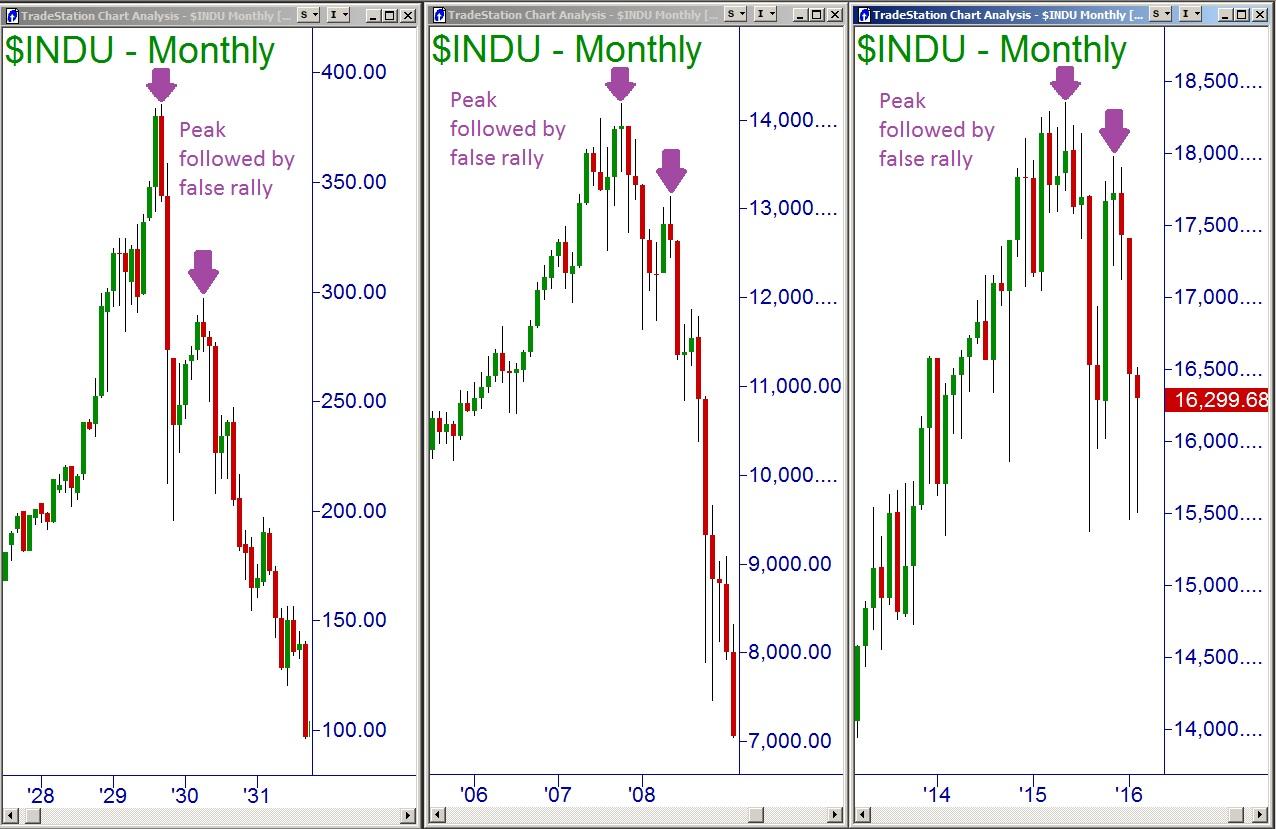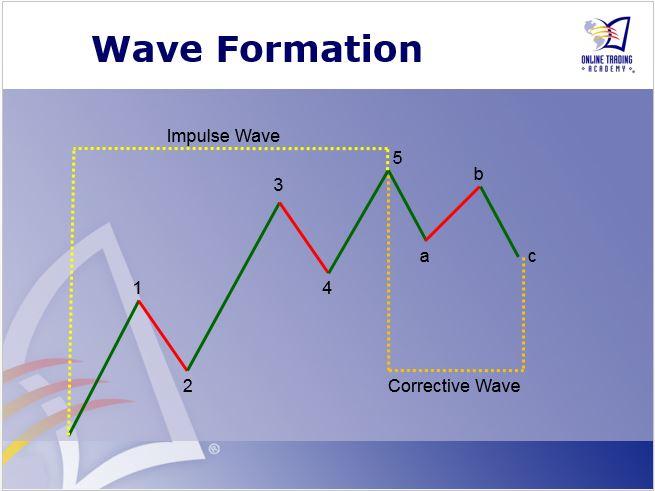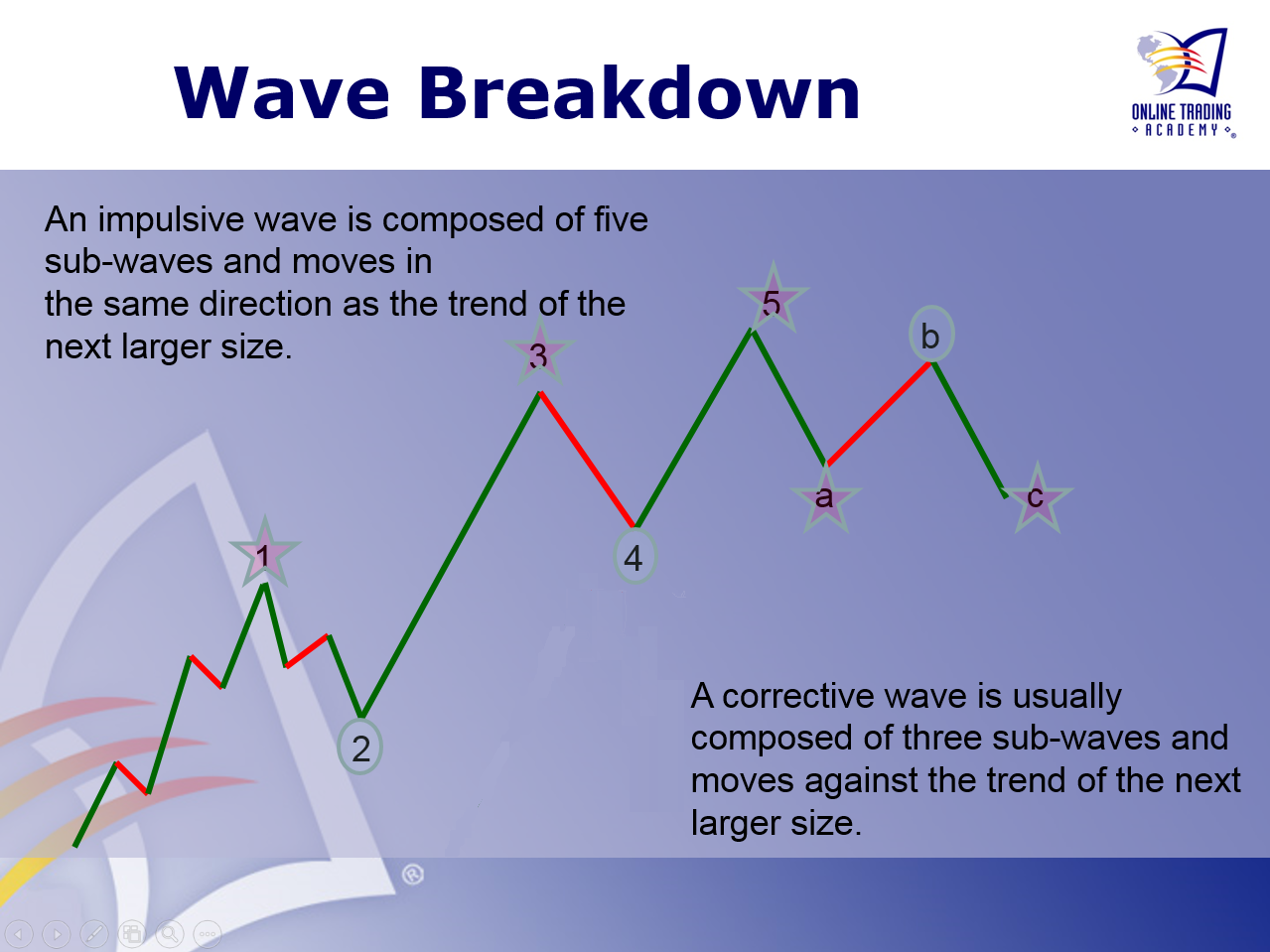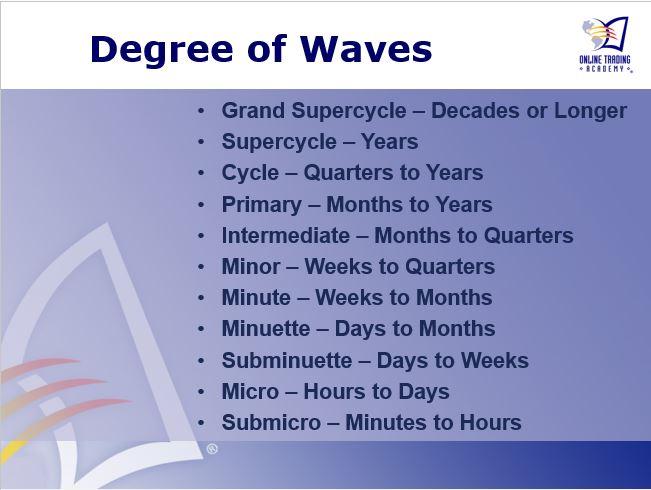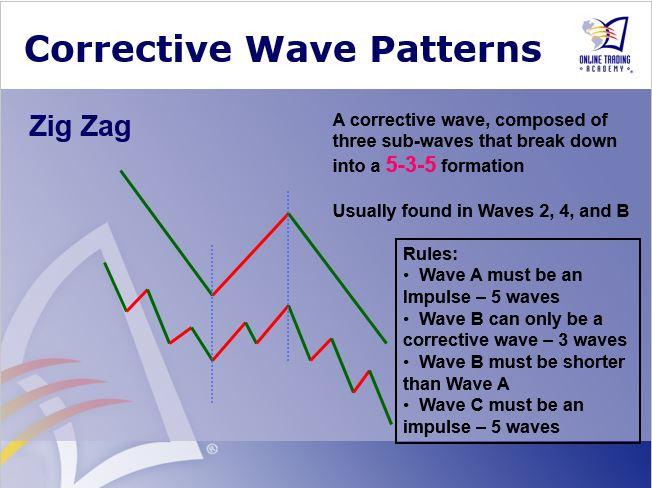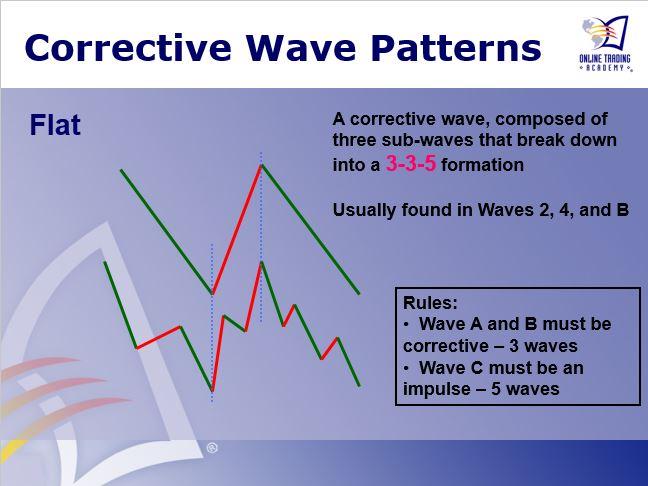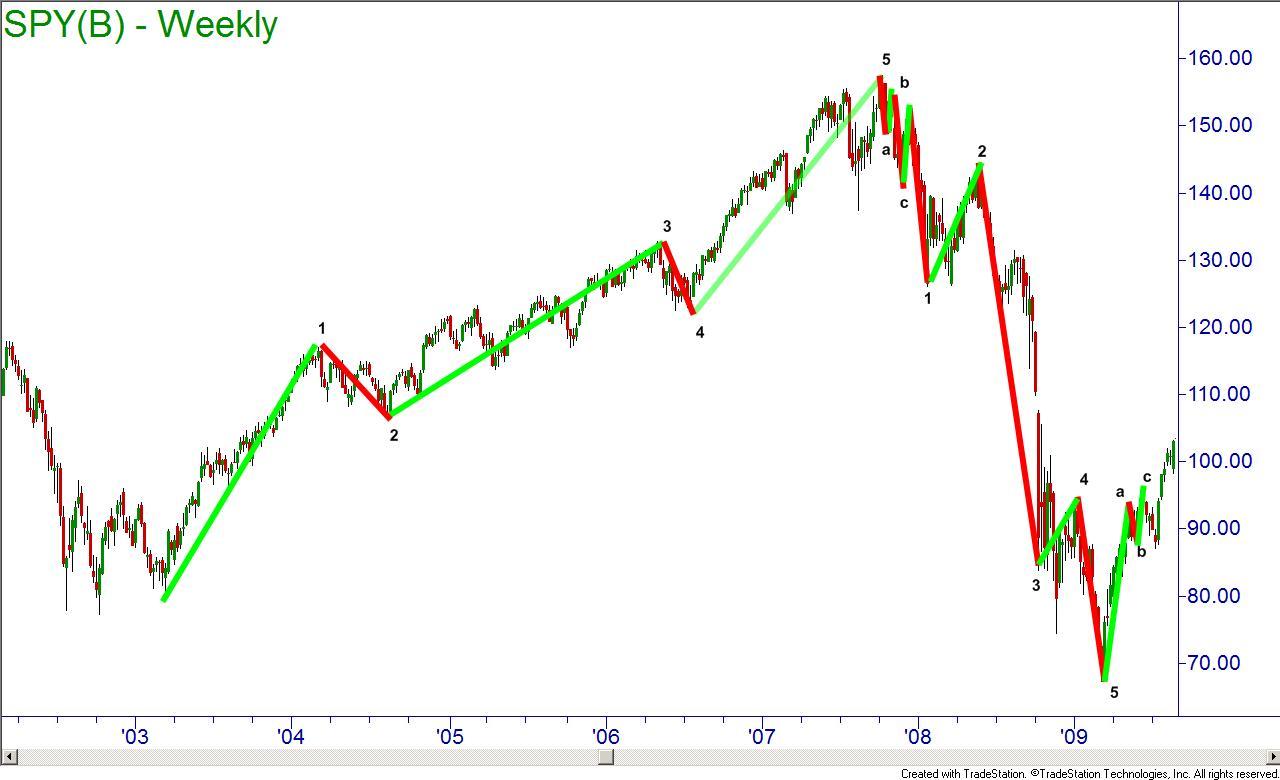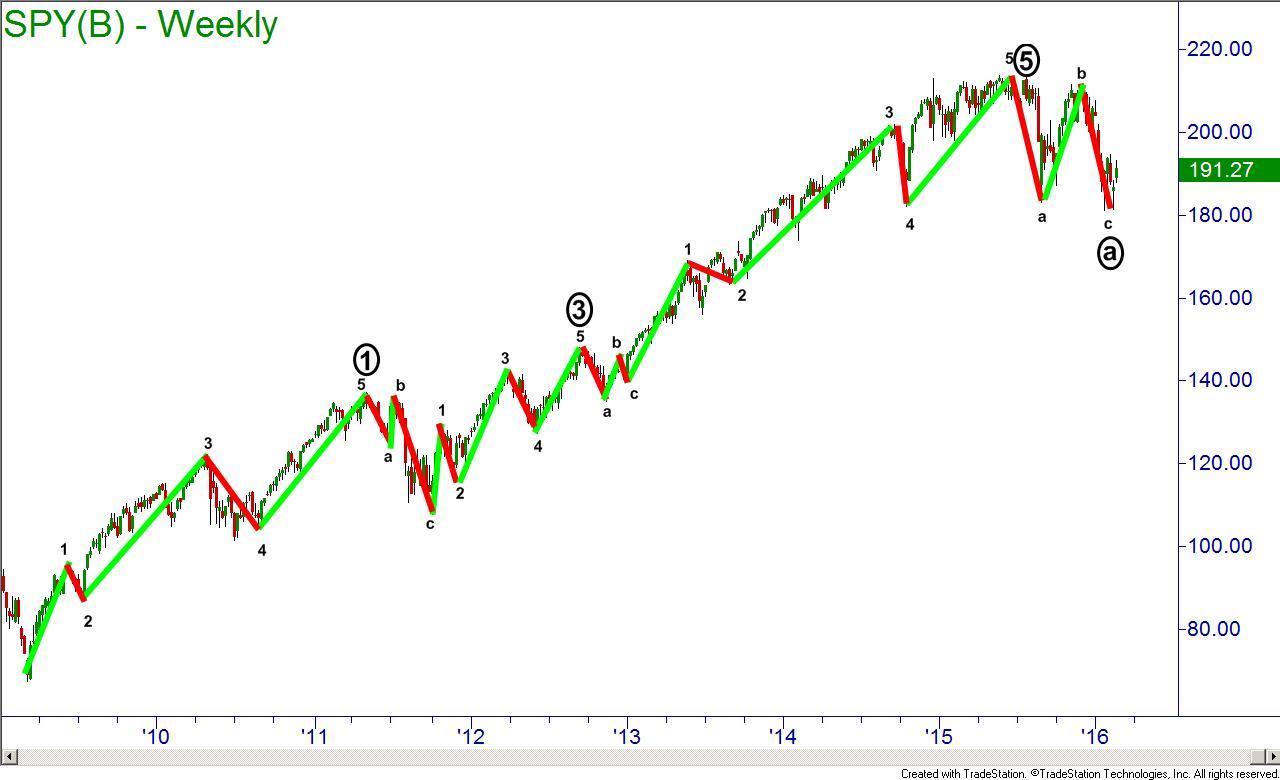Many people compare a lot of current price action in the markets with that of the great market crash and depression in the 1920’s. There may be some good reasons for that as price patterns do seem to repeat often. Another thing that can be useful from that era of trading is one of the technical analysis techniques, Elliott Wave.
I have received several emails requesting me to explain Elliott Wave Theory. While I do not use it for determining my entries and exits for trades, (I stick to Online Trading Academy’s Core Strategy), the theory can be useful for identifying trends and potential changes in those trends.
Ralph Nelson Elliot analyzed the Dow’s price action during the Great Depression and identified that the markets are fractal in nature and that they are comprised of rhythmic waves in price movement. He theorized that these waves could be predicted and measured. These price patterns work in all markets and in multiple timeframes.
The main principle of the Elliott Wave Theory is that prices move in a five wave pattern within the direction of the larger timeframe trend. Once those five waves have been completed, then prices start a three wave correction in the opposite direction before beginning another five wave pattern.
Just as the large impulse wave is broken into five components, the impulse waves, (labeled as “1,” “3,” and “5”), can be divided into five smaller waves themselves. The corrections, (labeled 2, 4 and b), subdivide into three small waves.
It is helpful to know what trend you are looking at when making your analysis. The traditional timeframes for the waves are below.
There are certain rules that apply to using Elliott Wave analysis on price charts. This will help with properly identifying the waves:
Wave 2 (a correction) cannot retrace 100% of Wave 1
Wave 3 cannot be the shortest wave, it is often the longest or can be at least the same length as Wave 1 or Wave 5
Wave 4 cannot enter the price action of Wave 1, however, there is one exception to this
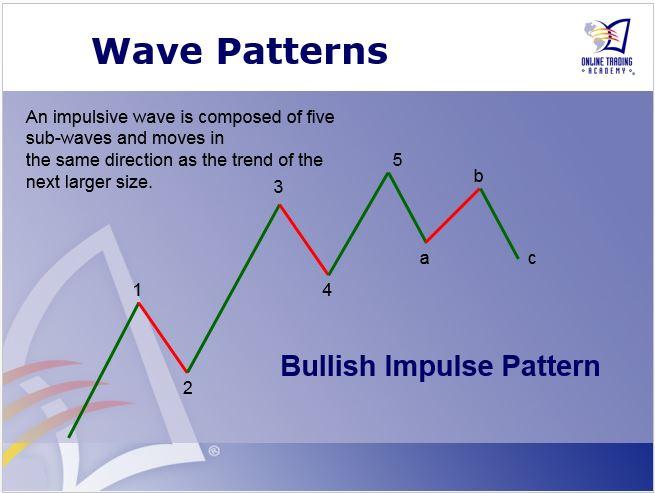
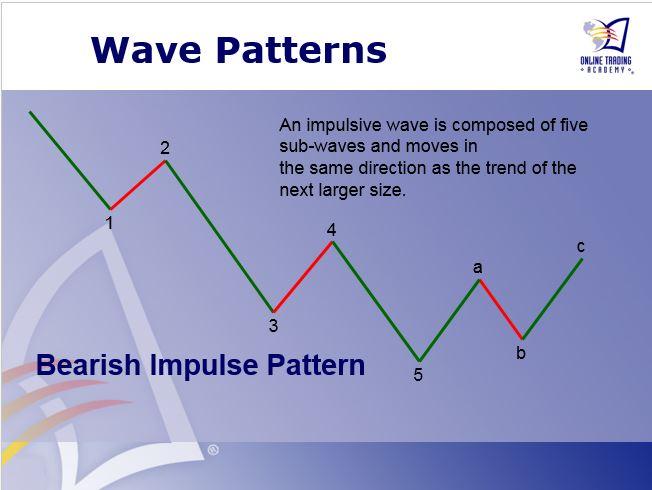
The exception for when Wave 4 can enter into the price action of Wave 1 is when the impulse wave is forming what is called a diagonal. The diagonal is when prices are narrowing in the impulsive direction. It is usually seen in waves 1, 5 or C.
As mentioned earlier, the corrective waves also have distinctive patterns and can be divided into three sub-waves that all together move against the trend of the larger size. There are two patterns that the corrective waves usually fit into, the zig zag and the flat.
Although the zig zag is a corrective pattern, the smaller waves that move with the correction divide into five sub-wave impulses. Overall this creates a 5-3-5 waver formation in the A-B-C.
The flat pattern is a 3-3-5 sub-wave formation. The overall correction’s price action usually moves sideways instead of moving sharply against the larger trend as the zig zag does.
A useful bit of information when trying to predict the potential shape of the newest correction, note the shape of the preceding one. Due to alternation, Wave 4 will usually take on the opposite shape of Wave 2 in the same impulse. So if Wave 2 was a flat, expect a zig zag for Wave 4 and vice versa.
The Elliott Wave theory should only be applied to liquid and heavily traded stocks. It can also be applied successfully to the indexes. Looking at the chart below, you can see how the SPY rise and crash from 2003 to 2009 fit the pattern.
In the following chart, I applied the wave pattern to the current bullish market run that started in 2009.
It can start to get a little confusing, but if you practice and stick to the simple rules the theory starts to make sense of the seemingly random markets. Next week, I will dive deeper into the Elliott Wave Theory including how to measure and trade the waves. Until then, trade safe and trade well!
Neither Freedom Management Partners nor any of its personnel are registered broker-dealers or investment advisers. I will mention that I consider certain securities or positions to be good candidates for the types of strategies we are discussing or illustrating. Because I consider the securities or positions appropriate to the discussion or for illustration purposes does not mean that I am telling you to trade the strategies or securities. Keep in mind that we are not providing you with recommendations or personalized advice about your trading activities. The information we are providing is not tailored to any individual. Any mention of a particular security is not a recommendation to buy, sell, or hold that or any other security or a suggestion that it is suitable for any specific person. Keep in mind that all trading involves a risk of loss, and this will always be the situation, regardless of whether we are discussing strategies that are intended to limit risk. Also, Freedom Management Partners’ personnel are not subject to trading restrictions. I and others at Freedom Management Partners could have a position in a security or initiate a position in a security at any time.
Editors’ Picks
EUR/USD clings to gains above 1.0750 after US data

EUR/USD manages to hold in positive territory above 1.0750 despite retreating from the fresh multi-week high it set above 1.0800 earlier in the day. The US Dollar struggles to find demand following the weaker-than-expected NFP data.
GBP/USD declines below 1.2550 following NFP-inspired upsurge

GBP/USD struggles to preserve its bullish momentum and trades below 1.2550 in the American session. Earlier in the day, the disappointing April jobs report from the US triggered a USD selloff and allowed the pair to reach multi-week highs above 1.2600.
Gold struggles to hold above $2,300 despite falling US yields

Gold stays on the back foot below $2,300 in the American session on Friday. The benchmark 10-year US Treasury bond yield stays in negative territory below 4.6% after weak US data but the improving risk mood doesn't allow XAU/USD to gain traction.
Bitcoin Weekly Forecast: Should you buy BTC here? Premium

Bitcoin (BTC) price shows signs of a potential reversal but lacks confirmation, which has divided the investor community into two – those who are buying the dips and those who are expecting a further correction.
Week ahead – BoE and RBA decisions headline a calm week

Bank of England meets on Thursday, unlikely to signal rate cuts. Reserve Bank of Australia could maintain a higher-for-longer stance. Elsewhere, Bank of Japan releases summary of opinions.
RECOMMENDED LESSONS
Making money in forex is easy if you know how the bankers trade!
Discover how to make money in forex is easy if you know how the bankers trade!
5 Forex News Events You Need To Know
In the fast moving world of currency markets, it is extremely important for new traders to know the list of important forex news...
Top 10 Chart Patterns Every Trader Should Know
Chart patterns are one of the most effective trading tools for a trader. They are pure price-action, and form on the basis of underlying buying and...
7 Ways to Avoid Forex Scams
The forex industry is recently seeing more and more scams. Here are 7 ways to avoid losing your money in such scams: Forex scams are becoming frequent. Michael Greenberg reports on luxurious expenses, including a submarine bought from the money taken from forex traders. Here’s another report of a forex fraud. So, how can we avoid falling in such forex scams?
What Are the 10 Fatal Mistakes Traders Make
Trading is exciting. Trading is hard. Trading is extremely hard. Some say that it takes more than 10,000 hours to master. Others believe that trading is the way to quick riches. They might be both wrong. What is important to know that no matter how experienced you are, mistakes will be part of the trading process.
